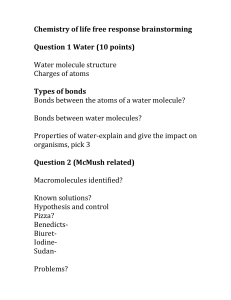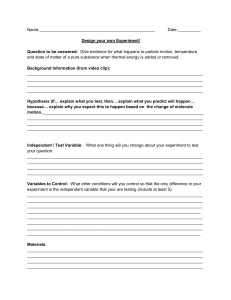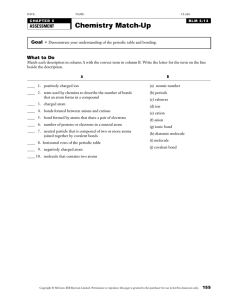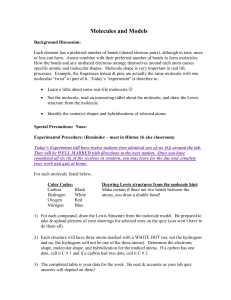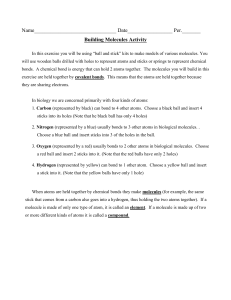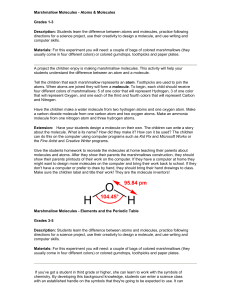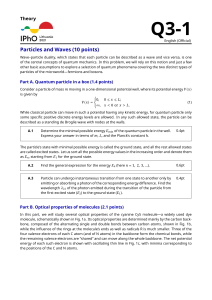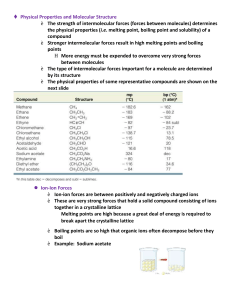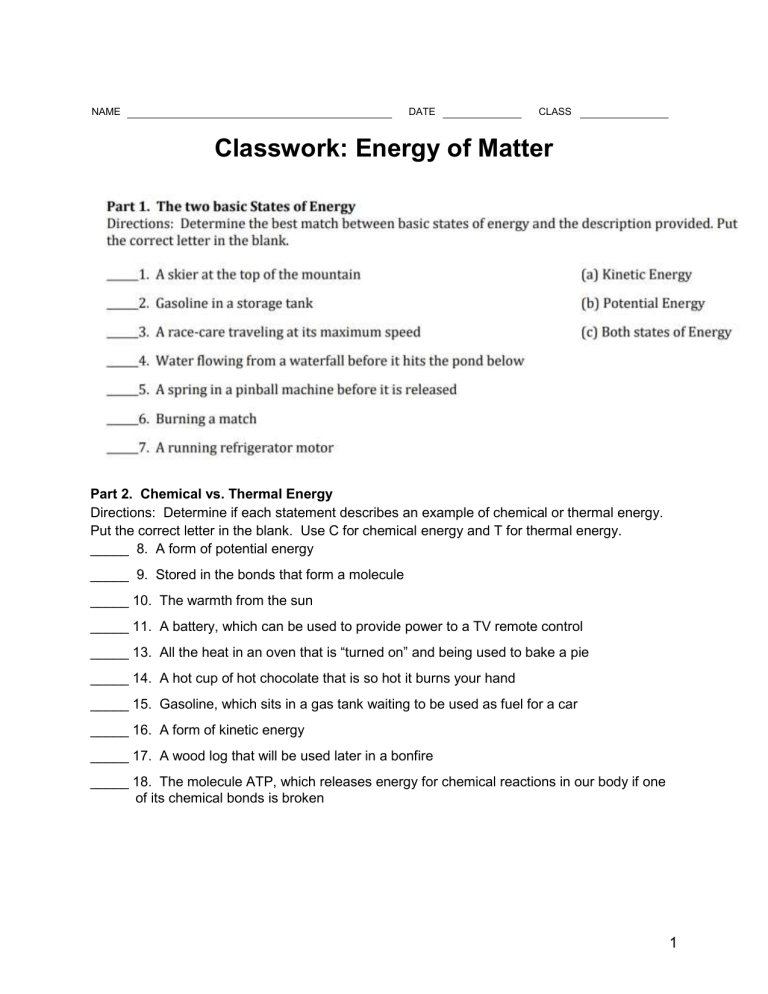
NAME DATE CLASS Classwork: Energy of Matter Part 2. Chemical vs. Thermal Energy Directions: Determine if each statement describes an example of chemical or thermal energy. Put the correct letter in the blank. Use C for chemical energy and T for thermal energy. _____ 8. A form of potential energy _____ 9. Stored in the bonds that form a molecule _____ 10. The warmth from the sun _____ 11. A battery, which can be used to provide power to a TV remote control _____ 13. All the heat in an oven that is “turned on” and being used to bake a pie _____ 14. A hot cup of hot chocolate that is so hot it burns your hand _____ 15. Gasoline, which sits in a gas tank waiting to be used as fuel for a car _____ 16. A form of kinetic energy _____ 17. A wood log that will be used later in a bonfire _____ 18. The molecule ATP, which releases energy for chemical reactions in our body if one of its chemical bonds is broken 1 Part 3. Energy of States of Matter 19. The three states (or phases) of matter are: ____________, __________, and _________ 20. The _____________ state of matter has a defined measurable volume but no defined shape, which is why it can “drip” or “spill”. 21. The _____________ state of matter has no defined shape and no defined volume because its molecules can easily disperse or spread through the air. 22. The ____________ state of matter has a defined shape and volume, and often feels “hard”. 23. Which shows the correct order of the three states of matter from greatest to least amount of kinetic energy? A. Liquid, solid, gas B. Solid, liquid, gas C. Gas, liquid, solid D. Gas, solid, liquid Part 4. Review of Matter 24. The basic unit of matter is called an a__________. 25. A substance that is made of all of the same types of atoms is called an e_________. 26. When more than 1 atom are chemically bonded together, it forms a m___________. 27. All matter has ___ and occupies space. The simplest form of matter containing only one type of atom with its own particular set of properties is called a(n) ___. A combination of two or more atoms that can be the same or different is called a(n) ___. Such combinations of atoms are held together by attractive forces, which help determine the ___ of matter. A. mass; particle; element; mass B. mass; element; molecule; state C. elements; atom; molecule; mass D. molecules; element; particle; state 2


